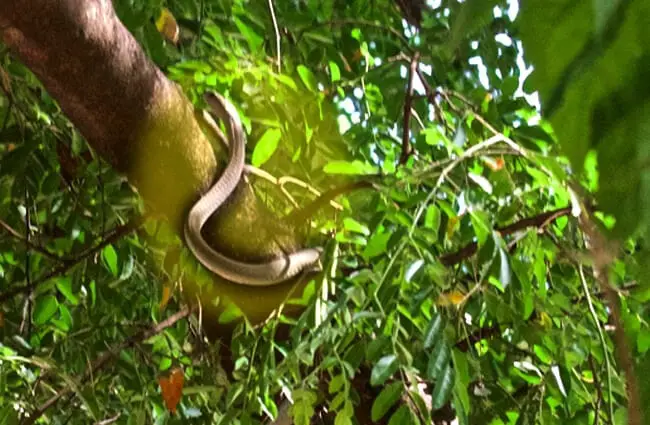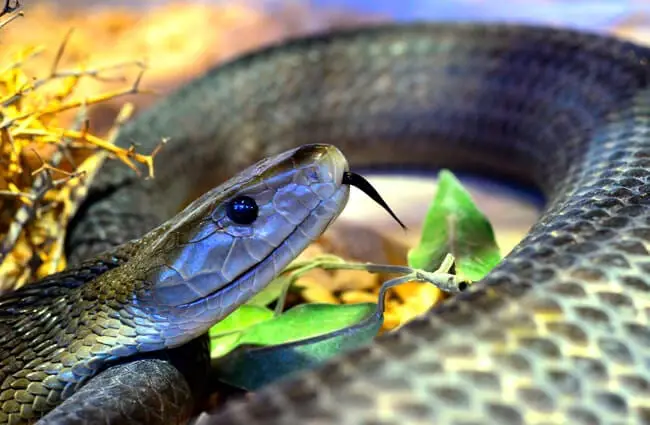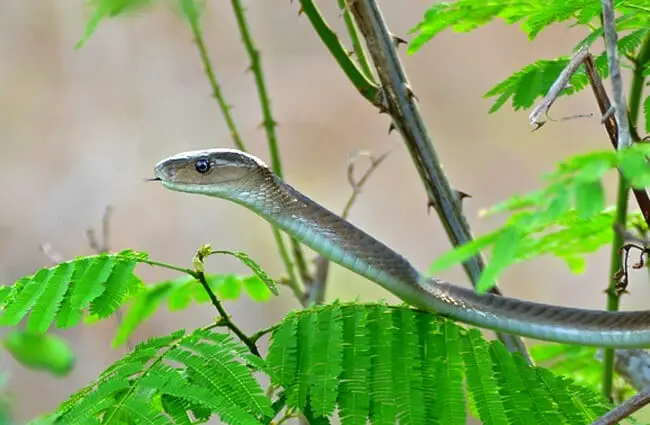The Black Mamba: A Comprehensive Guide
The Black Mamba Dendroaspis polylepis is a highly venomous snake native to sub‑Saharan Africa. Revered and feared in equal measure, it is one of the world’s fastest and most dangerous snakes. Beyond the sensationalism lies a fascinating creature with a complex ecology and a vital role in its ecosystem. This guide explores the biology, behavior, habitat, and interactions of the Black Mamba with the natural world and humans.

Understanding the Black Mamba
Despite its name, the Black Mamba’s body is not uniformly black. Its coloration ranges from olive, grayish, brownish to dark metallic gray. The inside of its mouth, however, is a stark, inky black—hence the name. This dramatic contrast serves as a warning signal to potential predators. Adult snakes typically reach 8 to 11 feet in length, with rare specimens exceeding 14 feet. They are slender and agile, well adapted for both ground and occasional arboreal activity.
Physical Characteristics & Adaptations
The Black Mamba’s speed is legendary. It can reach up to 12.5 miles per hour in short bursts, making it the fastest snake in the world. Its smooth scales reduce friction, enhancing movement. The snake has excellent eyesight for detecting prey and navigating its environment. A forked tongue collects scent particles, allowing it to “taste” the air and locate potential food sources.
Venom & Its Effects
The venom of the Black Mamba is a potent neurotoxin and cardiotoxin. A single bite can deliver enough venom to kill several adult humans. Without antivenom treatment, the effects are rapid and devastating, including paralysis, respiratory failure, and ultimately, cardiac arrest. While dangerous, Black Mambas are not inherently aggressive and will typically bite only when cornered or provoked. They often give warning signals, such as raising the front portion of their body, spreading their hood, and making a hissing sound.

Habitat & Distribution
Black Mambas are found in a variety of habitats across sub‑Saharan Africa, including savannahs, woodlands, rocky hillsides, and open forests. They prefer areas with dense vegetation for cover and access to water sources. Historically, they were more restricted to forested areas, but have adapted to more open environments as human activity altered the landscape. Their range extends across several countries, including Kenya, Tanzania, Botswana, Zimbabwe, South Africa, and Mozambique.
Finding Black Mambas in the Wild
For responsible wildlife enthusiasts, spotting a Black Mamba in the wild is an incredible experience. Look for them in areas with plenty of tree cover, particularly near water sources. They are most active during the daytime, especially in the cooler hours of the morning and late afternoon. However, observing from a safe distance is crucial. Never attempt to approach or harass a Black Mamba.
Diet & Hunting Behavior
Black Mambas are carnivores, feeding primarily on small mammals, rodents, birds, and occasionally other snakes. They are ambush predators, patiently waiting for prey to come within striking distance. Their speed and accuracy allow them to deliver a swift, venomous bite, incapacitating their prey. After the prey is immobilized, the snake swallows it whole.
Life Cycle & Reproduction
Black Mambas are oviparous, meaning they lay eggs. Females typically lay between 17 and 25 eggs in a sheltered location, such as a hollow log or abandoned termite mound. The eggs incubate for approximately 80 to 90 days. Newly hatched Black Mambas, or juveniles, are independent from birth and possess a fully functional venom apparatus. They are about 20 to 30 inches long and reach maturity within two to three years.

Ecological Role & Interactions
As a top predator, the Black Mamba plays a vital role in regulating populations of rodents and other small mammals, helping to maintain ecological balance. They have few natural predators; birds of prey and larger snakes may occasionally prey on juveniles. Their interactions with humans are complex, ranging from accidental encounters to deliberate killings due to fear and misconceptions.
Black Mambas and Human Interaction
While Black Mambas are undeniably dangerous, they are not inherently aggressive toward humans. Most bites occur when people accidentally step on or disturb a snake. It is crucial to exercise caution in areas where Black Mambas are known to inhabit and to avoid approaching or handling them. In the event of a bite, immediate medical attention is paramount. Antivenom is highly effective but must be administered promptly.
Black Mamba in Captivity
Caring for Black Mambas in captivity requires specialized knowledge and facilities. They need a large, secure enclosure with appropriate temperature and humidity control. A varied diet of rodents and other small mammals is essential. Enrichment activities, such as providing climbing structures and hiding places, are crucial for their well‑being. Strict safety protocols must be followed to prevent escapes and bites. Experienced keepers understand the need to minimize stress and provide a stimulating environment that mimics their natural habitat.

Evolutionary History
The evolutionary history of the Black Mamba, like many snakes, is still being researched. It belongs to the family Elapidae, which includes other venomous snakes such as cobras and kraits. Fossil evidence suggests that the ancestors of modern Black Mambas originated in Africa millions of years ago. Over time, they adapted to a variety of habitats and developed their characteristic speed, agility, and potent venom. Genetic studies are helping scientists to unravel the complex relationships between different snake species and to trace the evolutionary history of the Black Mamba.
Interesting Facts
- Black Mambas can deliver multiple strikes in a single attack.
- The Black Mamba’s venom contains both neurotoxins and cardiotoxins.
- Black Mambas are excellent climbers and often bask in trees.

The Black Mamba remains a symbol of both fear and fascination. Understanding its biology, behavior, and ecological role is essential for conservation efforts and for fostering respectful coexistence with this remarkable creature. While its reputation as a deadly snake is well deserved, it is also a vital component of the African ecosystem.

![Red Angus Closeup of a beautiful Red Angus cowPhoto by: U.S. Department of Agriculture [pubic domain]https://creativecommons.org/licenses/by/2.0/](https://animals.net/wp-content/uploads/2020/03/Red-Angus-4-238x178.jpg)




![Red Angus Closeup of a beautiful Red Angus cowPhoto by: U.S. Department of Agriculture [pubic domain]https://creativecommons.org/licenses/by/2.0/](https://animals.net/wp-content/uploads/2020/03/Red-Angus-4-100x75.jpg)

